-
Did you know that over 60% of homeowners now consider smart home system installation a must-have for modern living? In this guide, we unlock how straightforward and fast setting up a smart home can be—no tech expertise required.
-
In this article, you’ll discover: How to approach smart home system installation, the best home automation practices, recommended devices and tools, and professional tips to streamline your smart home installation journey.
Smart home system installation is no longer reserved for tech enthusiasts; it’s quickly becoming as common as installing a traditional home security system. With technology making tremendous leaps, seamless smart home installation is accessible to everyone, whether you live in a studio apartment or a sprawling family home. Let’s reveal how you can upgrade your daily life with efficient home automation, practical examples, and expert advice—making your home smarter, safer, and more convenient than ever before.
Understanding Smart Home System Installation: What Homeowners Need to Know

-
Explore what smart home system installation entails, how home automation is reshaping daily living, and practical examples of seamless smart home installation.
Smart home system installation involves integrating various connected devices into your living space, transforming manual routines into automated conveniences. As home automation becomes mainstream, the way we control lighting, temperature, security, and entertainment evolves exponentially. Imagine walking into a room and the lights adjusting to your preferences, your favorite music playing automatically, or being able to lock every door and monitor security cameras from your mobile app. These are just a few everyday experiences empowered by a modern smart home system.
Homeowners benefit from smart home installation by streamlining daily tasks through automation. Devices such as smart locks, sensors, thermostats, and security cameras interact via a central hub—bridging individual technologies into one cohesive home ecosystem. Practical examples include syncing smart thermostats for energy efficiency or using smart speakers with voice commands to control media, lighting, or even appliances. By investing in smart home system installation, you’re choosing modern comfort, convenience, and control, all tailored to your lifestyle.
“A smart home system installation can save up to 30% on energy costs by automating lighting, heating, and appliances.”—Industry Analyst
Key Components of a Smart Home: Devices, Central Hubs, and Control Systems
Essential Smart Home Devices for Smart Home System Installation
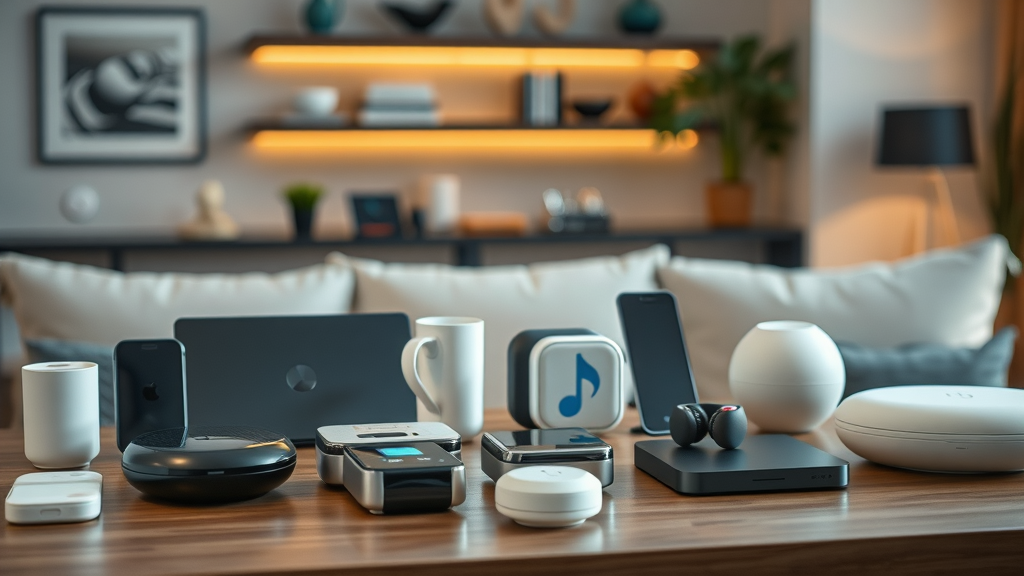
-
Delve into popular smart home devices including thermostats, security cameras, door locks, sensors, and lights, and how each plays a role in an integrated smart home system installation.
When considering smart home system installation, you’ll encounter a vast range of devices designed to upgrade your home. Smart thermostats automatically regulate temperature based on your habits or location, optimizing energy efficiency. Security cameras and motion sensors provide round-the-clock surveillance and can be accessed remotely via a mobile app, enhancing peace of mind. Smart locks offer keyless entry and custom access codes for family and guests. In addition to safety and comfort, smart lighting systems let you set scenes or automate schedules, catering to every moment throughout the day. These smart home devices work as the building blocks of a truly intelligent home.
Integrating smart devices like smart plugs , door/window sensors , and connected smoke alarms expands your control further. Compatibility among these devices ensures they communicate efficiently, creating a responsive home ecosystem. For instance, motion detected in a hallway can trigger lights along your path, or a window sensor can alert you if a window is left open while the AC is running. Selecting devices from reputable brands with robust app support and regular firmware updates will keep your smart home installation secure, fast, and reliable.
The Role of the Central Hub in Smart Home System Installation
-
Explain the necessity of a central hub, its function as the smart home’s control system, and how it coordinates smart devices for seamless home automation.
A central hub acts as the command center of your smart home system installation. Whether it’s a dedicated device or a feature within certain smart speakers, the central hub bridges communication between your devices and provides a unified interface for control. Popular hubs include Amazon Alexa, Google Assistant, and proprietary hubs from brands like Samsung SmartThings. These allow you to automate routines, manage devices, and set up voice commands—all from a single source. For example, by issuing a voice command or a tap on your phone or tablet, the hub executes instructions across all connected home devices, making home management effortless.
The central hub is crucial for system integration, especially in homes with diverse brands of smart devices. It ensures your smart thermostat, lights, smart locks, and security cameras work in harmony. In larger homes, dedicated hubs often support Zigbee or Z-Wave protocols for broader compatibility. Proper smart home installation planning makes sure your hub is centrally located to optimize wireless connectivity and avoid network blind spots.
Choosing the Right Control System for Your Smart Home Installation
-
Detail leading smart home control systems, including mobile app features and voice assistant integration, that guarantee intuitive management after installation.
Selecting the optimal control system for your smart home system installation is pivotal to ease of use and reliability. Mobile apps have become the gold standard for managing smart home products, offering dashboard-style views, real-time alerts, and granular device customizations. Top solutions like Apple HomeKit, Amazon Alexa, Google Home, and Samsung SmartThings feature intuitive interfaces and robust automation options.
Voice assistant integration enables hands-free operation, transforming your daily routines with simple voice commands. Whether you prefer to use Amazon Alexa or Google Assistant, these systems connect seamlessly with a majority of modern smart devices. They allow you to schedule events, create routines, or control lighting, temperature, and entertainment—all driven by your voice or a tap on your mobile app. As technology evolves, choosing a control system that supports both current and emerging home automation protocols helps keep your home future-ready.
Step-by-Step Guide to Smart Home System Installation
-
A detailed walkthrough of smart home system installation—from site assessment, device selection, installation steps, to post-installation testing.
-
Planning your smart home layout: Map out your home, noting where automation is most beneficial (entryways, living areas, bedrooms).
-
Choosing smart home devices: Select compatible smart home devices to meet your needs—think thermostats, security cameras, smart locks, and lighting systems.
-
Setting up the central hub and network: Place your central hub in a central location to ensure a strong connection to all devices, and configure your Wi-Fi for maximum coverage.
-
Installing smart home devices room by room: Follow manufacturer instructions to install each device, ensuring proper wiring and internet connectivity.
-
Linking devices to the mobile app and central hub: Use each device’s mobile app to pair with your central hub and bring them into a single control system platform.
-
Testing your home automation system: Verify device responses, automation routines, and mobile/voice command responsiveness to ensure seamless integration.
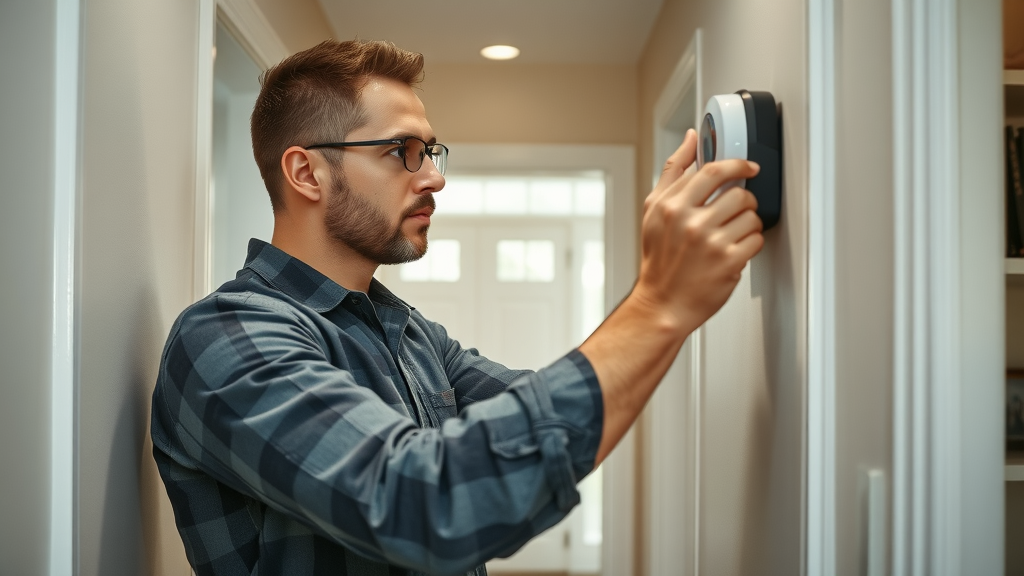
The first and most crucial step to a successful smart home installation is careful planning. Begin by assessing your space and identifying opportunities for automation—doorways, high-traffic rooms, or areas often left unwatched by traditional systems. Device selection is next, and should align with your priorities, whether that’s energy savings, security, or convenience. For every stage, leverage instruction manuals and setup guides provided by each brand. Choosing interoperable devices minimizes future headaches and ensures your system grows alongside your needs.
Once devices are chosen, install your central hub at the heart of your living space for balanced signal distribution. Ensure your Wi-Fi covers each room where smart home devices will be placed; consider mesh Wi-Fi or extenders for larger properties. Install each device following manufacturer instructions, then link it to your mobile app and central hub in turn. Don’t forget to create automation routines—such as “Good Night” to turn off lights and lock doors—then thoroughly test each setup for responsiveness and reliability.
DIY Smart Home System Installation vs. Professional Installation Service
-
Outline the pros and cons of DIY installation versus hiring a smart home installation service and a home installation service, emphasizing speed, expertise, cost savings, and custom features.
Homeowners debating between DIY and professional smart home system installation must consider factors like time, expertise, budget, and feature customization. A DIY approach offers cost savings, greater control over device selection, and scheduling flexibility. For tech-savvy users, it can be a rewarding and empowering process. However, DIY installation also carries the risk of incomplete integrations or technical errors, especially with complex devices like hardwired thermostats or home security systems.
Hiring a professional smart home installation service or home installation service ensures expertise, efficient setup, and comprehensive support. Professionals can tailor system designs to your specific needs, optimize your home ecosystem, and provide troubleshooting or upgrades. This service is especially valuable for intricate projects involving advanced home automation, high-end security, or integrating non-standard devices. The primary trade-off is added cost, but the peace of mind and time savings may outweigh the investment for many homeowners.
|
Comparison Table: DIY Smart Home System Installation vs Smart Home Installation Service |
||
|
Criteria |
DIY Installation |
Installation Service |
|---|---|---|
|
Cost |
Lower upfront; only device costs |
Device costs + service fees |
|
Time |
May take longer; self-paced |
Faster; done by professionals |
|
Expertise |
Requires research and learning |
Handled by experienced pros |
|
Scalability |
Limited by DIY knowledge |
Easy integration; future-ready |
|
Support |
Manufacturer or online forums |
In-person, ongoing support |
Common Challenges and Solutions in Smart Home System Installation
-
Address potential hurdles like device compatibility, Wi-Fi limitations, and software integration during smart home system installation, alongside actionable troubleshooting tips.
Device compatibility is one of the most frequent challenges in smart home system installation. With the market flooded by diverse brands and communication protocols (Zigbee, Z-Wave, Wi-Fi, Bluetooth), not all smart home devices play nicely together. To solve this, prioritize devices that support open ecosystem standards or select a central hub that bridges multiple protocols. Before purchase, always check manufacturer compatibility charts and user reviews for integration notes.
Network coverage and reliability issues can disrupt smart home automation, especially in larger homes or those with thick walls. Consider upgrading your router or deploying a mesh Wi-Fi system to ensure all smart devices remain connected. Regular network assessments and optimizing device placement help minimize signal dead zones. Additionally, software integration problems may arise when linking new devices. Keeping all device firmware and apps up to date is key—many bugs and compatibility issues are resolved in regular updates from manufacturers.
Enhancing Security and Privacy with Smart Home System Installation

-
Highlight how to install a smart home security system, using smart home devices for round-the-clock monitoring, and best practices to protect user data during home automation.
Security and privacy are paramount as your home grows smarter. Installing a robust smart home security system forms the foundation for safe, connected living. Devices like smart locks, security cameras, door/window sensors, and motion detectors provide real-time monitoring, instant alerts, and remote control via your mobile app or central hub. When configuring smart door locks, look for those offering encrypted communication and customizable codes for family and frequent visitors.
To enhance privacy, keep device firmware updated and use strong, unique passwords for each app or online account. Enable two-factor authentication where possible, and routinely audit app permissions to limit unnecessary data sharing. Protect your Wi-Fi network with a strong password and consider using a guest network for visitors or non-essential devices. These best practices ensure your smart home ecosystem remains both convenient and secure.
Smart Home Automation: Optimizing Comfort, Energy, and Convenience
-
Demonstrate how to automate daily routines through smart home system installation—programming lighting, climate control, and entertainment, with real-world automation examples.
The real magic of home automation shines as you automate everyday activities. With smart home system installation, program your home to perform repetitive tasks automatically—like adjusting the thermostat when you leave, setting lights to match sunset, or streaming your favorite playlist as you walk in the door. For example, integrate your lighting, blinds, and thermostat into a “Movie Night” routine triggered with a single voice command or tap on your mobile app.
Smart home devices help optimize energy consumption by ensuring lights aren’t left on and rooms aren’t overheated or overcooled. Delayed timers, presence sensors, and geofencing features align your home’s behavior with your daily patterns, reducing wasteful spending. By leveraging these home automation tools, you not only enhance comfort but also achieve significant long-term savings and elevate your quality of life.
Integrating Smart Home System Installation with Existing Home Devices
-
Strategies for incorporating existing home devices into new smart home system installations, including retrofitting and bridging traditional and smart technologies.
Integrating your smart home system installation with existing home products requires the right strategy and sometimes additional components. Retrofit solutions like smart plugs, Wi-Fi-enabled light switches, or add-on sensors bring automation to traditional devices without major rewiring. Bridging technologies, such as universal hubs or cross-platform apps, can link older home devices with new, connected ones—forming a unified home ecosystem that doesn’t require replacing perfectly functional equipment.
Focus on compatibility and interoperability as you expand your system. Research which devices work best with your chosen central hub or mobile app. Manufacturers frequently release software updates that extend compatibility with more smart home devices, so stay informed through official channels. By bridging traditional and smart technologies, you can enjoy the benefits of home automation while maximizing your existing investments.
Maintenance, Support, and Upgrades After Smart Home System Installation

-
Discuss ongoing maintenance tasks, regular updates, technical support, and how to future-proof smart home system installations against rapid tech evolution.
Maintaining your smart home system installation is key to enjoying reliable automation and enhanced security over the long term. Plan to regularly update device and app firmware, which addresses bugs, adds features, and patches vulnerabilities. Most mobile apps offer automatic update options—enable them to keep your smart home ecosystem current. It’s also wise to periodically check manufacturer websites or community forums for support tips or integration improvements.
As new smart home devices enter the market, future-proof your system by choosing hubs and control platforms that are backward compatible and support open standards. If issues arise, rely on official technical support resources from manufacturers, or consult with a trusted home installation or smart home installation service for complex troubleshooting or system expansion. Regular maintenance, proactive firmware updates, and careful planning ensure your smart home investment thrives for years to come.
Cost Considerations for Smart Home System Installation
-
Break down the price factors affecting smart home system installation: device costs, home installation service fees, energy-saving potential, and value-adding upgrades.
The total investment for smart home system installation varies widely depending on your goals, home size, and device preferences. Entry-level automations—such as smart speakers, basic lighting, or one or two security cameras—can start under a few hundred dollars with DIY setup. More comprehensive systems that include professional installation, integrated security, climate control, and high-end features can reach several thousand dollars. Device quality, automation complexity, and optional home installation services all influence your final cost.
While upfront costs may seem high, many homeowners realize ongoing savings through automated energy management and efficient device scheduling. Additionally, the resale value of a home with a sophisticated smart home installation can offset much of the initial expense. When budgeting, factor in device costs, any recurring service or monitoring fees, and your desired level of post-installation support.
|
Smart Home System Installation Cost Estimates by Room and Device Type |
||
|
Room/Area |
Device Type |
Estimated Cost (USD) |
|---|---|---|
|
Entryway |
Smart Lock, Door Sensor |
$200–$500 |
|
Living Room |
Smart Speaker, Lighting, Thermostat |
$250–$700 |
|
Bedroom |
Smart Lights, Plug, Voice Assistant |
$100–$350 |
|
Security (Whole Home) |
Cameras, Motion Sensors, Alarms |
$300–$1,200 |
|
Professional Installation (Optional) |
Service Fee |
$500–$2,000+ |
Smart Home System Installation: Voices from the Field
“Smart home installation transformed my home’s security and convenience overnight.” —Recent Customer
Feedback from homeowners underscores the value of smart home installation, with many citing improved peace of mind, simplified routines, and the delight of automating everyday tasks. Whether enhancing accessibility for older adults, streamlining busy family mornings, or boosting travel security, the benefits resonate with households of all kinds.
Real-world stories showcase the personal impact: smoother mornings, greater energy savings, and proactive property protection even when miles away. Each successful smart home system installation reflects modern living’s advancing expectations—and sets the stage for lifelong convenience and safety.
Expert Checklist for Effortless Smart Home System Installation
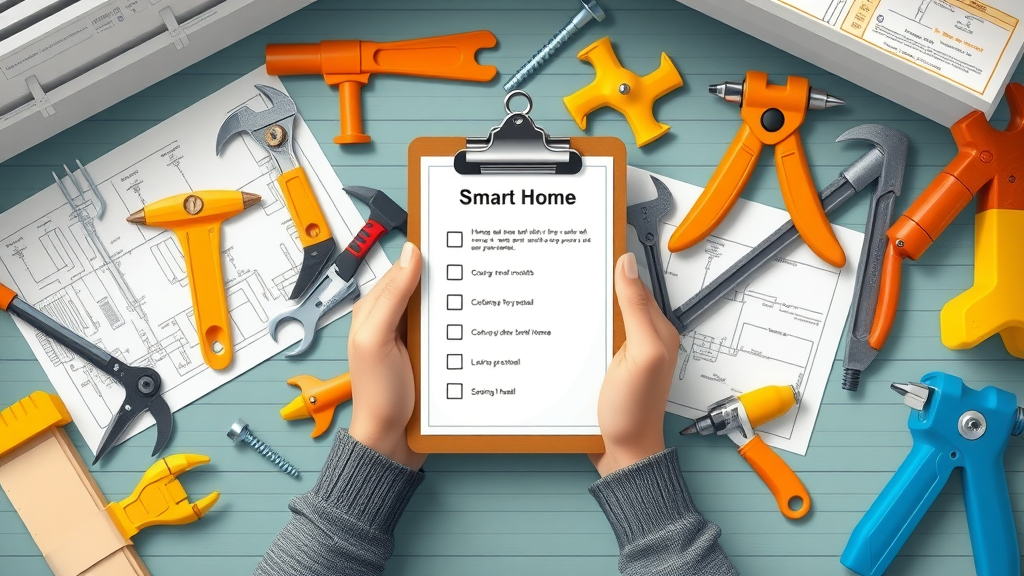
-
Comprehensive list of steps, tools required, and must-do checks for a flawless smart home installation.
-
Top checklist items before, during, and post smart home system installation
Preparation leads to hassle-free smart home installation. Start with a clear list of key devices and placement strategies for each room. Gather essential tools like screwdrivers, wire strippers (for hardwired devices), cable organizers, your mobile app shortlisted, and a reliable Wi-Fi connection. During installation, follow device pairing instructions and test each as you add it to your home ecosystem. After setup, double-check for device software updates, create automation routines, and conduct mock scenarios (like triggering alarms or unlocking doors) to ensure every system works as intended.
A robust installation checklist reduces errors, improves reliability, and ensures long-term satisfaction. Don’t skip steps or rush device pairings, especially for security-sensitive smart locks or cameras. Lastly, document device configurations and credentials—this saves time when troubleshooting, expanding, or providing access to family members.
People Also Ask
How much does a smart home installation cost?
-
Answer explores cost ranges, factors, and tips to optimize your smart home system installation budget.
The cost of smart home installation can range from as little as $200 for basic DIY setups (including smart lights or speakers), to $5,000 or more for comprehensive systems with multiple devices and professional installation service. Factors include the number and type of devices, whether you opt for a home installation service, and desired automation complexity. To optimize your budget, start with priority devices—like a smart lock or thermostat—and expand over time as your needs grow.
What is a smart home installation?
-
A complete explanation of smart home installation, covering devices, automation, and system integration.
Smart home installation is the process of integrating internet-connected devices—such as smart thermostats, lights, locks, sensors, and security cameras—into your home. These devices are controlled via a mobile app, voice assistant, or central hub, enabling automation routines for lighting, climate, security, and more. The goal is to create a unified home system that streamlines daily life, enhances security, and delivers personalized comfort.
Do I need an electrician for a smart home?
-
Guidance on when professional assistance is necessary for smart home system installations versus DIY-friendly components.
Not all smart home installations require an electrician. Many devices—such as smart plugs, sensors, and Wi-Fi-enabled lights—are plug-and-play and can be installed DIY. However, for hardwired systems (e.g., smart thermostats, electrical panel-based smart devices), or if your installation involves new wiring, it’s safest to hire a qualified electrician or a professional smart home installation service to ensure proper setup and compliance with local codes.
How to install a smart home security system?
-
Stepwise instructions on installing key smart home security devices and integrating them into a central smart home system.
Begin by selecting compatible security cameras, sensors, and smart locks for your home. Install each device per manufacturer instructions, ensuring cameras have unobstructed views and sensors are placed at entry points. Connect each device to your central hub and pair it with your mobile app. Test all devices—monitor camera feeds, trigger motion sensors, and test smart locks—to confirm everything is integrated and responsive. Customize your security routines in-app for hands-free arming and disarming.
Quick Reference FAQ: Smart Home System Installation Essentials
-
Short answers to common questions about devices, network setup, compatibility, and ongoing support for smart home system installations.
Ready to get started?
-
Device compatibility: Choose brands with open standards (Zigbee, Z-Wave, Wi-Fi) for easy integration.
-
Network setup: Ensure strong Wi-Fi coverage in every room for seamless device communication.
-
Central hub necessity: For multi-device setups, a central hub streamlines automation and control.
-
Post-installation support: Keep device firmware updated and refer to manufacturer resources for troubleshooting.
Maximize Your Living: The Benefits Await After Smart Home System Installation
-
Recap the transformative benefits smart home system installation brings to modern homes: convenience, security, energy savings, and resale value.
Smart home system installation transforms your daily routines, making your home more responsive, energy-efficient, and secure. It adds tangible value through enhanced comfort, increased safety via real-time monitoring, and automation that tailors your living environment to your unique needs. Plus, a well-installed smart home system can boost the resale value of your property, making it more attractive to tech-savvy buyers and future-proofing your investment.
Video Demonstration: Step-by-Step Smart Home System Installation
-
Embed a video walkthrough of the entire smart home system installation process.
-
Provide a video guide showing solutions to frequent installation errors and integration problems.
-
A video focused on utilizing home automation features—scheduling, routines, and advanced controls after system installation.
Unlock Your Smart Home Potential with Expert Smart Home System Installation Guidance
-
Encourage readers to use the information and actionable steps outlined above to confidently begin or enhance their smart home journey for a safer, smarter, and more efficient living environment.
Leverage the practical steps, expert checklists, and troubleshooting tips provided above to take control of your smart home system installation—making your home secure, sustainable, and tailored to your lifestyle. Start small, think big, and enjoy the benefits of modern living!
To further enhance your understanding of smart home system installation, consider exploring the following resources:
-
“DIY vs. Professional Smart Home Installation: What’s Best for You?” This article provides a comprehensive comparison between DIY and professional smart home installations, helping you determine the best approach based on your needs and technical skills. ( hometechhacker.com )
-
“Home Automation Installation: Who to Hire” This guide outlines the benefits of hiring a licensed smart home specialist, detailing their expertise, insurance coverage, and the ongoing support they offer, ensuring a seamless and secure installation process. ( angi.com )
If you’re serious about optimizing your smart home setup, these resources will provide valuable insights to guide your installation journey.


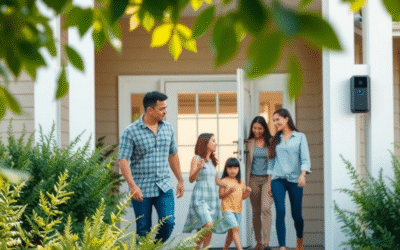
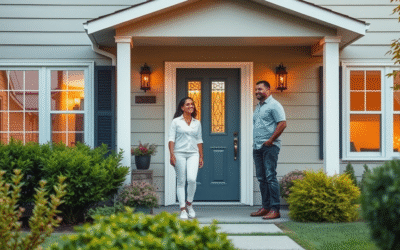
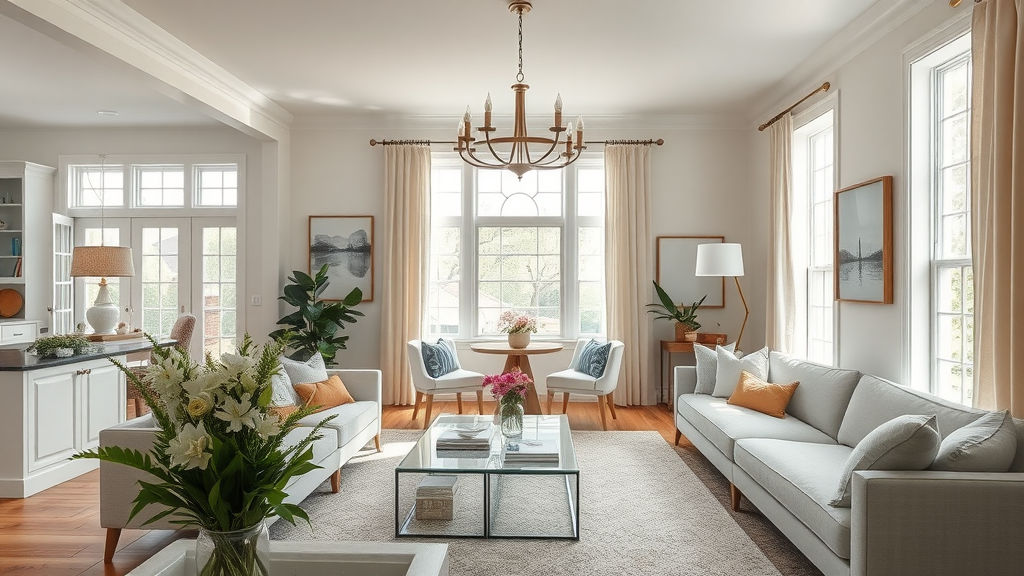


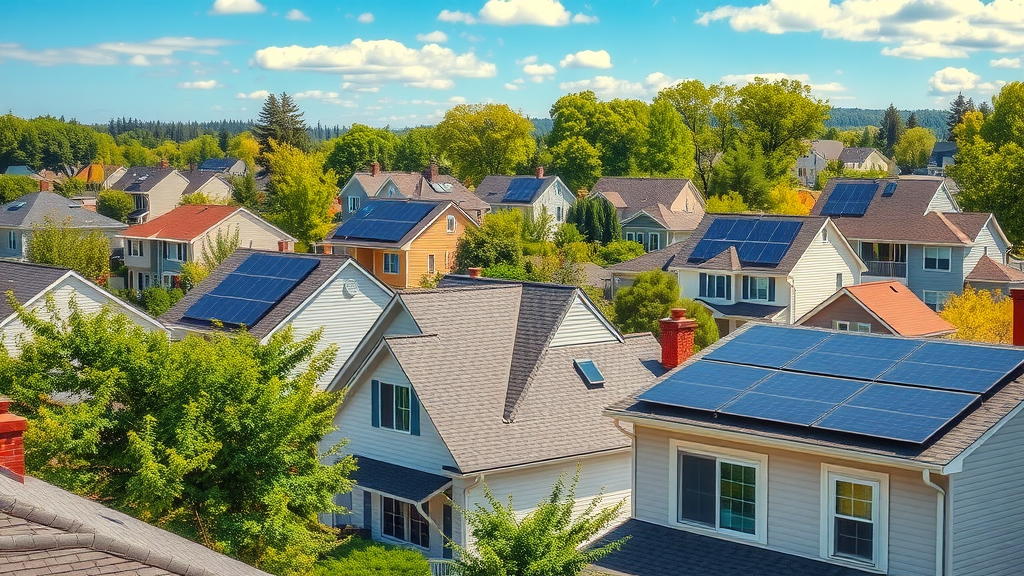
0 Comments